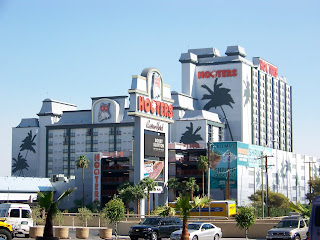Charles Sturt University has conferred an honorary Doctor of Science on the late Dr Tony Jordan, OAM, who died earlier this week, and paid tribute to the pioneer of wine science education.
Dr Jordan was informed of his award prior to his passing earlier this week.
Charles Sturt vice-chancellor Professor Andrew Vann said he was saddened to hear of Dr Jordan’s passing and the award was a fitting way for the university to recognise his contributions to the higher education sector and the Australian wine industry.
“Dr Jordan contributed greatly to Charles Sturt, in particular to the establishment and development of our wine science and viticulture courses,” Professor Vann said.
“He was an early advocate for developing stronger links between academia and the wine industry, and over the past 25 years remained an active supporter of Charles Sturt’s wine science program.
“Dr Jordan was also a highly respected and accomplished leader in the Australian wine industry, who made great contributions to the industry through the many esteemed positions he held.
“Dr Jordan leaves behind a remarkable legacy. He was a true pioneer in the Australian wine industry and the University was very fortunate for his contributions.”
Dr Jordan had a long relationship with Charles Sturt, beginning his academic career as a lecturer in chemistry in 1974 at the Riverina College of Advanced Education, a precursor institution of Charles Sturt.
During his time at Charles Sturt, he helped to establish the University’s first Bachelor of Wine Science and Diploma of Viticulture and was later appointed as wine science course co-ordinator.
After leaving full-time employment with the university, Dr Jordan held senior leadership positions with several leading organisations in the wine industry such as Domaine Chandon Australia, Chandon Estates, and the French Möet Hennessy group, and established his own consultancy business, vineyard, and winery business.
The University Council resolved at its meeting on August 2 to confer the title on Dr Jordan (pictured) for his outstanding commitment to Charles Sturt and the Australian wine industry through education, winemaking, consulting, administration and wine show judging.
Dr Jordan was informed of his award prior to his passing earlier this week.
Charles Sturt vice-chancellor Professor Andrew Vann said he was saddened to hear of Dr Jordan’s passing and the award was a fitting way for the university to recognise his contributions to the higher education sector and the Australian wine industry.
“Dr Jordan contributed greatly to Charles Sturt, in particular to the establishment and development of our wine science and viticulture courses,” Professor Vann said.
“He was an early advocate for developing stronger links between academia and the wine industry, and over the past 25 years remained an active supporter of Charles Sturt’s wine science program.
“Dr Jordan was also a highly respected and accomplished leader in the Australian wine industry, who made great contributions to the industry through the many esteemed positions he held.
“Dr Jordan leaves behind a remarkable legacy. He was a true pioneer in the Australian wine industry and the University was very fortunate for his contributions.”
Dr Jordan had a long relationship with Charles Sturt, beginning his academic career as a lecturer in chemistry in 1974 at the Riverina College of Advanced Education, a precursor institution of Charles Sturt.
During his time at Charles Sturt, he helped to establish the University’s first Bachelor of Wine Science and Diploma of Viticulture and was later appointed as wine science course co-ordinator.
After leaving full-time employment with the university, Dr Jordan held senior leadership positions with several leading organisations in the wine industry such as Domaine Chandon Australia, Chandon Estates, and the French Möet Hennessy group, and established his own consultancy business, vineyard, and winery business.



























